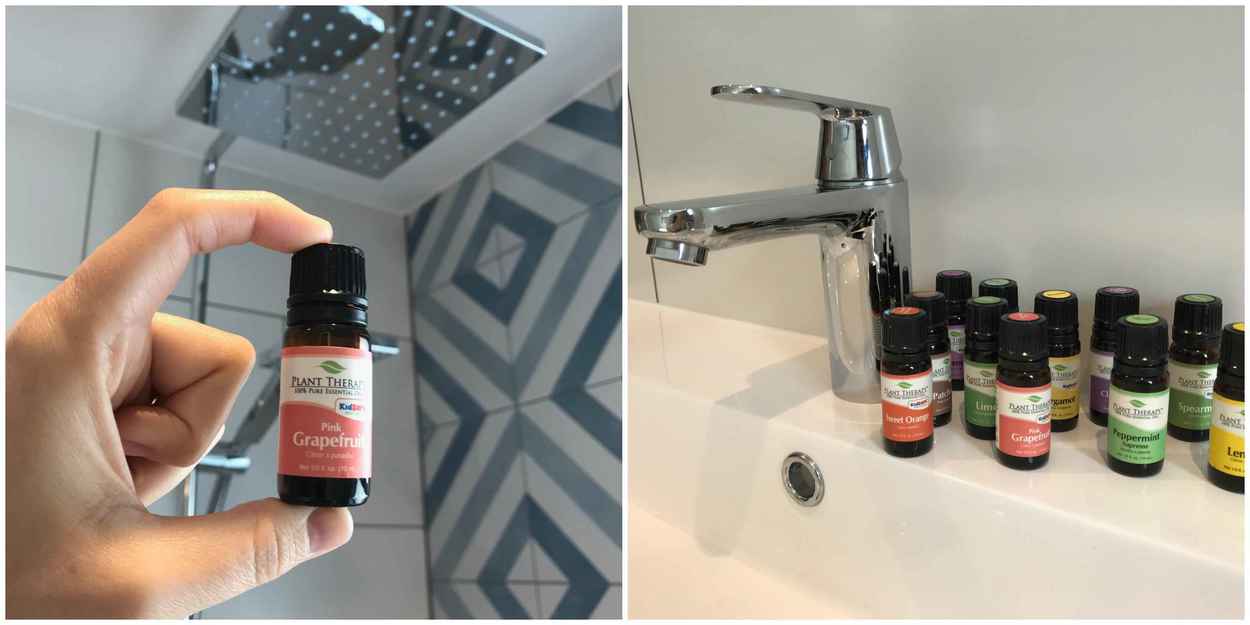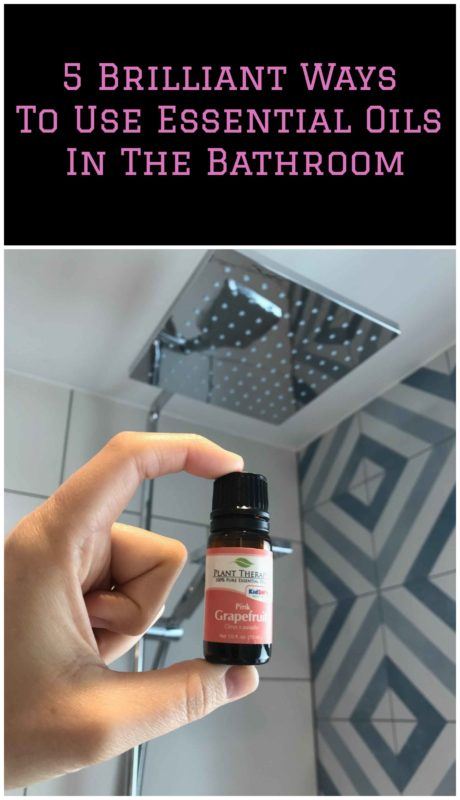
Essential oils can be used in several ways in the bathroom. Some essential oils lend themselves more readily for use in the bathroom, due to their therapeutic properties. It is important to understand how to use essential oils safely and know which ones are appropriate for use in the bathroom.
This article is intended as a quick introduction on how to use essential oils in the bathroom. For a comprehensive look at the therapeutic properties of the individual essential oils mentioned, consult the appropriate essential oil profile.
1. Using Essential Oils in the Bath Tub
Essential oils can be used in the bath tub for a number of problems; these include arthritis, chronic pain, colds, skin inflammation and itching. For conditions such as skin inflammation and itching, you may want to use cooler water than the recommended warm water bath. Use at a low dilution in the bath (start with 1%) until you know how your skin will react.
Add essential oils to sea salts, Epsom salts, and other mineral salts, in addition to combining them in a carrier oil to create a bath oil. In all situations it is advised to add a dispersant (such as bath gel, polysorbate, or a solubol) to the essential oils and salts or carrier oil. Oil and water don’t naturally mix together, so the dispersant helps the oil and water combine for safer use.
Some essential oils which are suitable for using in the bath include:
- Lavender (Lavandula angustifolia)
- Roman chamomile (Chamaemelum nobile)
- Rose (Rosa x damascena)
- Geranium (Pelargonium graveolens)
- Frankincense (Boswellia carteri)
- Neroli (Citrus aurantium var. amara (flos)).
Avoid more skin-sensitizing essential oils for bath use such as ginger (Zingiber officinale), peppermint (Mentha x piperita), cinnamon (Cinnamomum zeylanicum) and tea tree (Melaleuca alternifolia).
2. Using Essential Oils in the Shower
You can use essential oils in the shower for respiratory conditions, as the steam from the shower works in conjunction with the essential oils to relieve blocked airways. You can also add them to a shower gel base (see below on how to do this).
If you want to use essential oils for respiratory conditions, make an aromatherapy shower bomb or shower disk. There are various ways to make this type of product, but I prefer the simple method of combining bicarbonate of soda, citric acid, carrier oil of choice, arrowroot powder (or cornstarch), and essential oils.
Here’s our full recipe and step-by-step tutorial for making “Breathe-Easy Shower Disks”.
Place the shower bomb or disk in a small dish on a shelf in the shower where it will get enough water to start the process of “diffusing” the aromatherapy bomb but not so much as it will disappear within seconds. Don’t place it on the shower floor, as it will disperse quickly and leave behind an oily residue that can cause you to slip. You will need to run the shower first at a hot temperature before getting in to build up steam.
Essential oils which can be used this way for respiratory conditions include blue gum eucalyptus (Eucalyptus globulus), peppermint (Mentha x piperita), lemon (Citrus x limon), and myrtle (Myrtus communis). For a morning wake-up and/or to stimulate your memory, use rosemary (Rosmarinus officinalis) or clary sage (Salvia sclarea) essential oils. Again, start at a 1% dilution rate and build up to 3% for acute conditions on a short-term basis.
Read Next: 3 Brilliant Ways To Use Essential Oils In The Shower
3. Adding Essential Oils to Shower Gel or Soap
If you want to add essential oils to a shower gel or soap base, the easiest way is to purchase an unscented base product from a reputable supplier. It can be as simple as a castile soap base (which is usually made from a base of olive oil and water). This Dr. Bronners Unscented Castile Soap is the perfect choice.
Add essential oils such as lavender (Lavandula angustifolia), tea tree (Melaleuca alternifolia), geranium (Pelargonium graveolens), and lime (Citrus aurantifolia) for daily washing of hands. Use at a dilution rate of about 2%.
4. Aromatherapy Bathroom Spray
You can make a deodorizing and freshening aromatherapy bathroom spray in two ways: Add essential oils to a distilled water base or simply use a hydrosol.
If you choose the first option, you will need to add in a dispersant (as mentioned above) to make sure that the essential oils mix with the distilled water base. Use between a 3 – 5% dilution rate of essential oils if you don’t spray directly onto the skin, and you don’t have seniors, pregnant ladies, and/or babies and young children in the house.
The alternative option is to use hydrosols. Hydrosols are distilled from plants, just like essential oils, but they are the aqueous product of the distillation vs. the oil product of the distillation (which are the essential oils). Hydrosols can be used directly from the bottle, although you can combine one or more hydrosols to make an aromatic hydrosol blend.
Plant Therapy have a number of hydrosol options available from their Amazon store here.
Use a glass spray bottle to disperse the aromatherapy blend into the air. Spritz lightly once or twice in the air to eradicate unpleasant bathroom smells and/or disinfectant the area.
Recommended essential oils to use in an aromatherapy bathroom spray include rosemary (Rosmarinus officinalis), Scotch pine (Pinus sylvestris), and lime (Citrus aurantifolia). You can also use the hydrosol of Douglas fir (Pseudotsuga menziesii), tulsi (Ocimum tenuiflorum), or thyme (Thymus vulgaris).
5. Using Essential Oils as a Cleaning Product in the Bathroom
Essential oils (and hydrosols) can also be used to clean the bathroom worktops, sink, and bath tub. Use them in a spray bottle as recommended above and add either distilled water or white vinegar as the base. Use a dilution rate of about 3% when cleaning with essential oils. Choose essential oils such as lavender (Lavandula angustifolia), lemon (Citrus x limon) and sage (Salvia officinalis). As always, consult a certified aromatherapist for further advice if you are unsure how to use essential oils safely as a cleaning product.
Where To Buy Essential Oils
Natural Living Ideas recommended essential oil supplier is Plant Therapy. They stock almost every single oil you can imagine, as well as range of organic oils, hydrosols and an abundance of essential oil accessories.
You can browse their selection at their official Amazon storefront here and below we present a few of the essential oils mentioned in this article.
Cautions for Using Essential Oils in the Bathroom
There are many ways to use essential oils in the bathroom. You just need to check the cautions for using individual essential oils, the safe dilution rate to use them, and how to mix them safely with different bases. It’s also important to remember that babies, children, seniors, pregnant ladies, and those with chronic long-term illnesses and/or recent hospitalizations may need to use a lower dilution rate and/or not use the recommended blend at all. Take a look at our guide for using essential oils safely but remember it is not an exhaustive resource.
Used safely and correctly, essential oils can add a pleasing aroma to your bathroom experiences!
Pin This For Later

